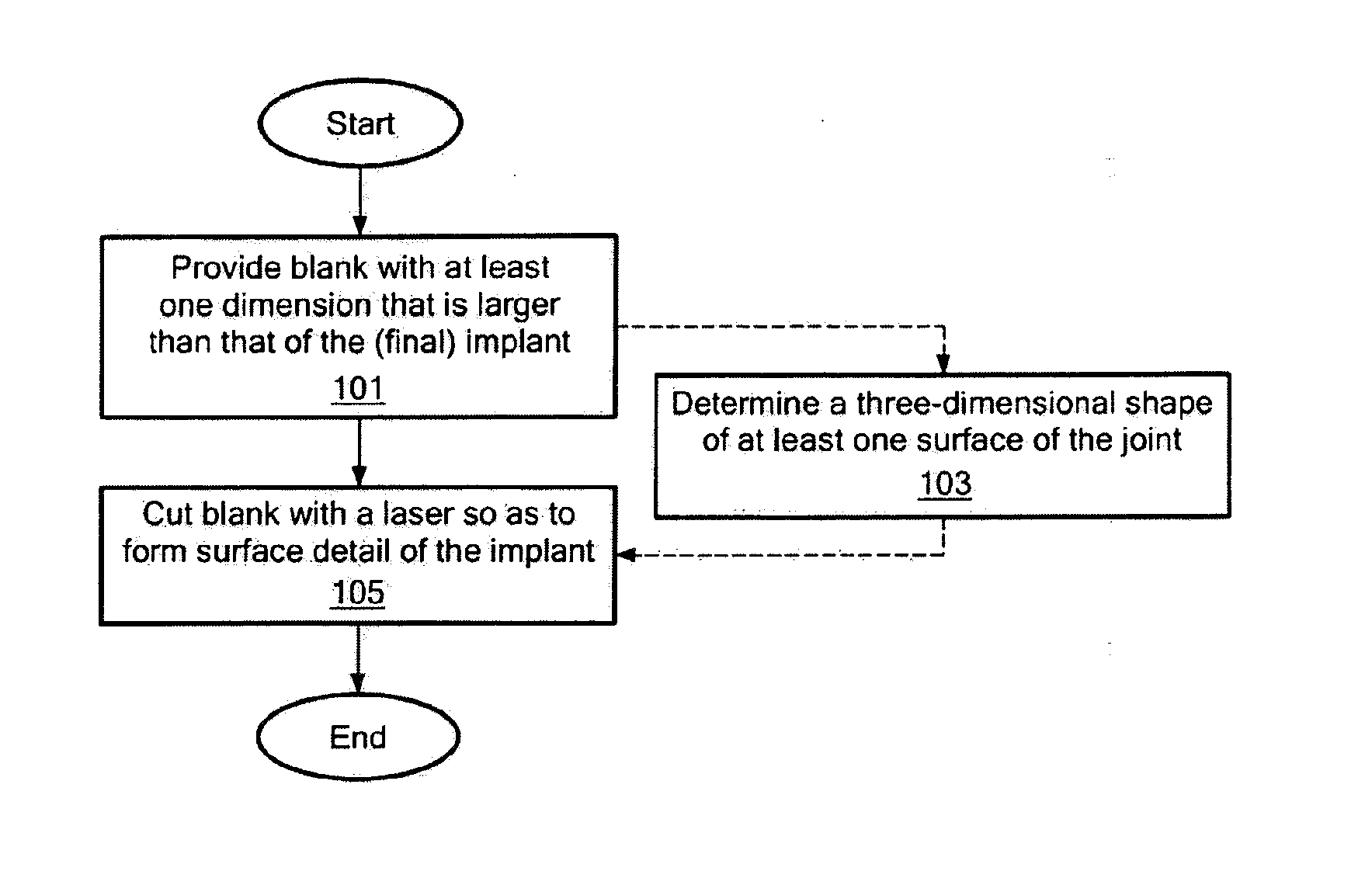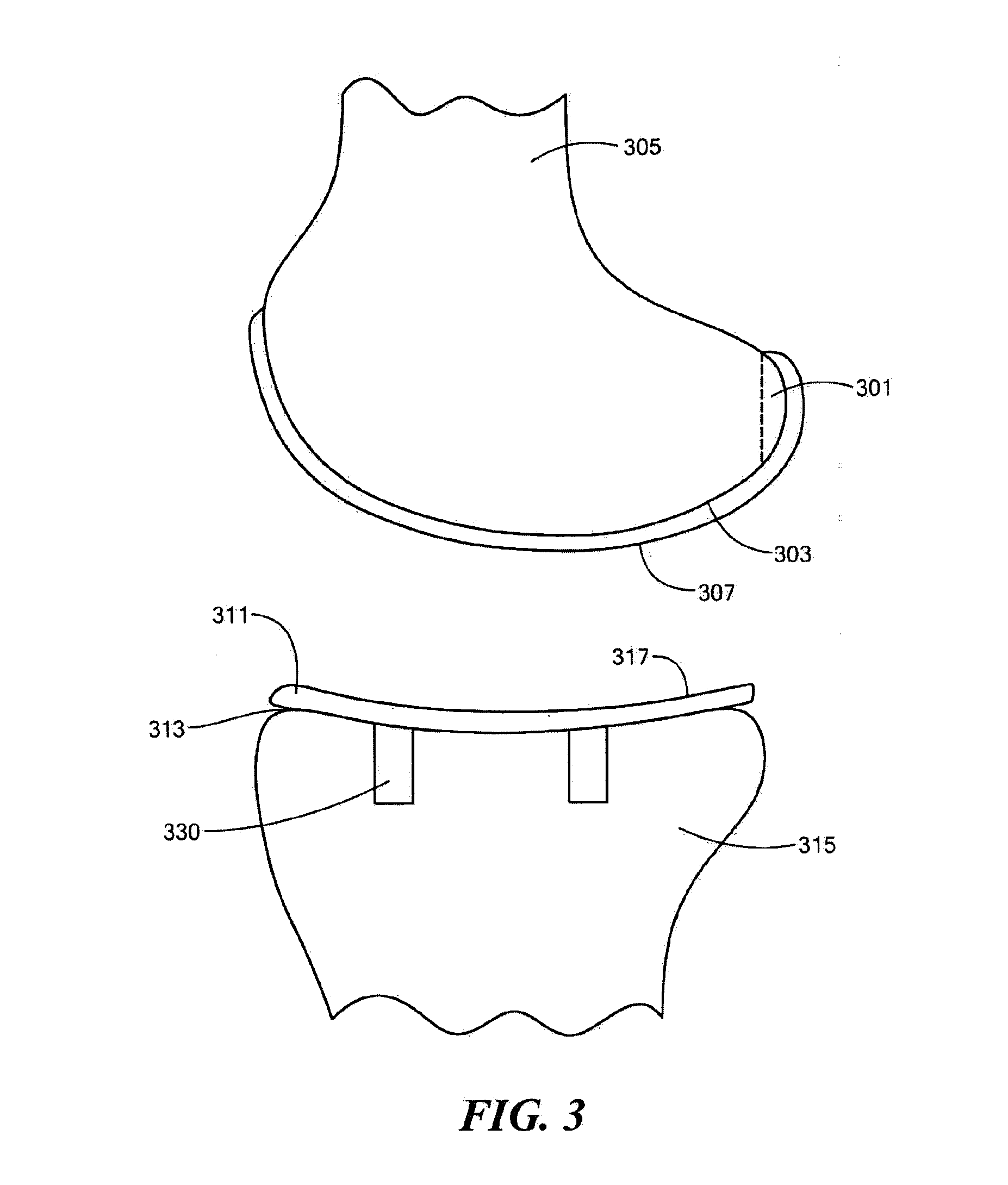Implant Device and Method for Manufacture
a manufacturing method and implant technology, applied in the field of implant devices and methods for manufacture, can solve the problems of loss of valuable bone stock, increased manufacturing costs, and increased manufacturing costs, and achieve the effects of reducing the cost of manufacturing, and increasing the cost of manufacturing
- Summary
- Abstract
- Description
- Claims
- Application Information
AI Technical Summary
Benefits of technology
Problems solved by technology
Method used
Image
Examples
Embodiment Construction
[0034]Disclosed are systems and methods for making joint implants that leverage additive or subtractive manufacturing methods including laser sintering and electron beam melting, and to less-invasive and / or non-invasive joint implants which may be advantageously made by the methods described herein. Such implants may feature a surface of the implant that is advantageously a mirror image of, substantially a negative of or formed in a shape that substantially conforms to the joint surface, or combinations thereof. In other embodiments, non-invasive or less-invasive joint implants that rest on substantially uncut subchondral bone are described. Detailed disclosures are now described in further detail, below.
[0035]As used herein and in the appended claims, the singular forms “a”, “an”, and “the” include plural references unless the context clearly dictates otherwise. Thus, for example, reference to “a device” includes a plurality of such devices and equivalents thereof known to those sk...
PUM
| Property | Measurement | Unit |
|---|---|---|
| Size | aaaaa | aaaaa |
| Shape | aaaaa | aaaaa |
Abstract
Description
Claims
Application Information
 Login to View More
Login to View More - R&D
- Intellectual Property
- Life Sciences
- Materials
- Tech Scout
- Unparalleled Data Quality
- Higher Quality Content
- 60% Fewer Hallucinations
Browse by: Latest US Patents, China's latest patents, Technical Efficacy Thesaurus, Application Domain, Technology Topic, Popular Technical Reports.
© 2025 PatSnap. All rights reserved.Legal|Privacy policy|Modern Slavery Act Transparency Statement|Sitemap|About US| Contact US: help@patsnap.com



